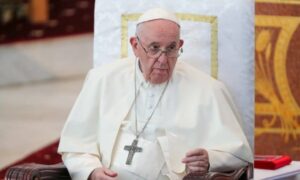The Fifa has announced comprehensive guidelines for the 2025 Club World Cup, a tournament set to reshape global football with 32 participating teams. Scheduled for June 15 to July 13 in the United States, the competition adopts a format similar to the Fifa World Cup, featuring eight groups of four teams and knockout stages culminating in the final. The event, spanning 11 US cities, with the final at the iconic MetLife Stadium in New Jersey, is already generating significant excitement among fans and clubs. With innovative rules, such as head-to-head results as the primary tiebreaker and a ban on clubs with the same ownership, Fifa aims to ensure competitiveness and geographic diversity. Brazilian teams, including Flamengo, Palmeiras, Fluminense, and Botafogo, are confirmed, strengthening South America’s presence in the tournament.
This new format marks a significant evolution from previous editions, which featured fewer teams and were held annually in December. The decision to expand to 32 clubs and hold the tournament every four years reflects Fifa’s goal of establishing the Club World Cup as a prestigious global event. The choice of the United States as the host is strategic, aligning with the country’s preparations for the 2026 World Cup. Additionally, the tournament will feature an exceptional transfer window from June 1 to 10 and allow player substitutions between June 27 and July 3, providing flexibility to clubs.
The group stage draw, set for December 5, 2024, in Miami, will determine the tournament’s composition. The process will consider sporting and geographic factors, with the 32 clubs divided into four pots. Fifa has established clear rules to prevent imbalances, such as prohibiting more than one team from the same confederation in each group, except for UEFA, which will have 12 representatives. This structure aims to promote diverse and exciting matchups from the outset, with teams from all continents competing in a format that prioritizes sporting merit.
- Tiebreaker criteria for the group stage:
- Head-to-head results between tied teams.
- Goal difference.
- Total goals scored.
- Tournament format: Eight groups of four teams, with the top two from each advancing to the round of 16.
- Transfer window: Exceptional registration period from June 1 to 10.
Structure and logistics of the 2025 Club World Cup
The organization of the 2025 Club World Cup underscores Fifa’s commitment to delivering a world-class tournament with modern infrastructure and meticulous logistical planning. The 11 host cities, including New York, Miami, Los Angeles, and Seattle, were selected to provide top-tier stadiums and facilitate global fan access. Orlando, for instance, will feature two venues: Camping World and Inter&Co, expanding the region’s capacity. The final, set for July 13 at MetLife Stadium, promises to be a landmark event, with a capacity of over 82,000 spectators and a strategic location near major European broadcast markets.
Participating clubs can register up to 35 players, but only 26 may be listed for each match, including three mandatory goalkeepers. This rule balances squad depth with the need for competitive play. Additionally, Fifa has stipulated that two accumulated yellow cards result in a suspension, with the count reset only in the quarterfinals. This measure encourages fair play but increases pressure on players to avoid early bookings.
The choice of June and July for the tournament has sparked debate, particularly among European clubs concerned about the impact on their already packed schedules. Teams like Manchester City and Real Madrid have raised concerns about player fatigue, but Fifa has emphasized that clubs must field their strongest lineups, with significant fines for non-compliance. This requirement, outlined in article 4.2 of the regulations, aims to ensure the Club World Cup features the world’s top talent without reliance on reserve squads.
32/32. The stage is set. ✅ 🏆 #FIFACWC pic.twitter.com/6vnDBlmU5A
— FIFA Club World Cup (@FIFACWC) December 1, 2024
Challenges and controversies of the new format
The 2025 Club World Cup is not without controversies. The expansion to 32 teams and the nearly month-long duration have drawn criticism, particularly in Europe, where the sporting calendar is already congested. Elite clubs like Manchester City, Real Madrid, and Bayern Munich have expressed concerns that the tournament could hinder preparations for the 2025/2026 season. The mandate to field starting lineups, while intended to elevate the competition’s quality, has also been questioned for increasing injury risks.
Another contentious issue involves the rule on multi-club ownership. Fifa has barred clubs controlled by the same entity or individual from participating, leading to legal disputes. Costa Rican club Alajuelense, for example, requested the disqualification of Mexico’s Pachuca or León, citing ownership conflicts. The matter reached the Court of Arbitration for Sport in February 2025, but Fifa upheld the participation of all 32 qualified clubs, temporarily resolving the issue. This rule also affects conglomerates like City Football Group and Eagle Holding, owned by John Textor, who controls Botafogo’s SAF, potentially facing restrictions in future editions.
Despite these controversies, Fifa is banking on the diversity of participants to attract a global audience. The allocation of slots across confederations was designed to reflect each continent’s competitive strength, with UEFA receiving 12 slots, CONMEBOL six, and AFC, CAF, and CONCACAF four each. Oceania will have one slot, occupied by Auckland City, while Inter Miami represents the host nation, ensuring Lionel Messi’s participation. This structure enables the inclusion of clubs from less traditional regions, such as Tunisia’s Espérance de Tunis and South Africa’s Mamelodi Sundowns, fostering a clash of footballing styles and cultures.
- Slot allocation by confederation:
- UEFA: 12 slots (four Champions League winners from 2021 to 2024 and eight via ranking).
- CONMEBOL: 6 slots (four Libertadores champions from 2021 to 2024 and two via ranking).
- AFC, CAF, CONCACAF: 4 slots each.
- OFC: 1 slot.
- Host nation (USA): 1 slot (Inter Miami).
- Confirmed Brazilian clubs: Flamengo, Palmeiras, Fluminense, and Botafogo.
- Key venues: MetLife Stadium (final), Hard Rock Stadium (opening match), Camping World and Inter&Co (Orlando).
Global impact and expectations for the tournament
The 2025 Club World Cup is viewed as a pivotal test for the future of club football. Fifa hopes the tournament will solidify its status as the premier global club event, surpassing the relevance of continental competitions like the UEFA Champions League. The inclusion of 32 teams from all confederations reinforces the narrative of inclusion and globalization, a core pillar of president Gianni Infantino’s vision. Hosting the event in the United States also targets the North American market, where football competes with sports like basketball and American football.
The tournament is expected to be a financial milestone, attracting major sponsors and broadcasters. Although prize money details remain undisclosed, speculation suggests the champion could receive significantly higher sums than in previous editions. Global broadcasts, with games concentrated on the East Coast to align with European viewing times, are set to boost viewership, particularly in Europe, Asia, and Latin America.
For Brazilian clubs, the tournament offers a unique opportunity to claim a global title in a highly competitive format. Flamengo, Palmeiras, Fluminense, and Botafogo bring strong squads and a history of Libertadores success but will face formidable opponents like Manchester City, Real Madrid, and Bayern Munich. The preparation of South American teams will be critical, especially given the exceptional transfer window and the ability to adjust squads during the tournament.
Schedule and preparation for the draw
The group stage draw, scheduled for December 5, 2024, in Miami, will be a defining moment for the 2025 Club World Cup. The event will shape the initial matchups and set the tone for the competition. Fifa has confirmed that clubs are distributed across four pots based on continental rankings and sporting criteria. Teams in Pot 1, such as Flamengo, Palmeiras, Manchester City, and Real Madrid, will be seeded, ensuring groups led by major forces.
The draw process will follow strict rules to ensure balance. No group can include more than one team from the same confederation, except for UEFA, which will have two clubs in four of the eight groups. Additionally, South American clubs like the Brazilian teams will not be placed in the same group, guaranteeing diverse matchups. Inter Miami, as the host representative, is confirmed in Group A, while Seattle Sounders will open their campaign in Group B.
- 2025 Club World Cup schedule:
- Group stage draw: December 5, 2024, in Miami.
- Exceptional transfer window: June 1 to 10, 2025.
- Player substitution period: June 27 to July 3, 2025.
- Tournament start: June 15, 2025.
- Final: July 13, 2025, at MetLife Stadium.
Representation and logistical challenges
The inclusion of 32 clubs from six confederations makes the 2025 Club World Cup one of the most representative tournaments in football history. UEFA, with 12 slots, dominates in quantity, reflecting Europe’s financial and sporting power. CONMEBOL, with six slots, highlights South America’s strength, while AFC, CAF, and CONCACAF, with four slots each, ensure representation from Asia, Africa, and North America. Oceania, with Auckland City, and Inter Miami, as the host, complete the lineup.
Logistics, however, pose significant challenges. The concentration of matches on the East Coast, except for Los Angeles and Seattle, was planned to avoid conflicts with the CONCACAF Gold Cup, held simultaneously on the West Coast. Fifa will also need to manage the tournament’s impact on player schedules, particularly given its proximity to the European season and South American competitions. The exceptional transfer window and mid-tournament substitutions aim to mitigate these issues, but player fatigue remains a concern.
The selected stadiums, such as Hard Rock Stadium in Miami and Lumen Field in Seattle, are renowned for hosting major sporting events. The final at MetLife Stadium, which has previously hosted high-profile matches like Barcelona vs. Real Madrid friendlies, underscores Fifa’s ambition to deliver an unforgettable spectacle. The United States’ modern stadiums and efficient transportation networks will be a key asset for the tournament’s success.
Innovative rules and club impact
The 2025 Club World Cup rules introduce innovations that could redefine club competition dynamics. Using head-to-head results as the primary tiebreaker in the group stage is a departure from Fifa’s traditional reliance on goal difference, emphasizing direct outcomes and heightening the importance of each match. In the knockout stages, single-leg ties with extra time and penalties for draws eliminate the possibility of two-leg fixtures.
The ban on clubs with shared ownership reflects Fifa’s focus on sporting integrity, preventing conglomerates like City Football Group or Red Bull from dominating with multiple teams. However, enforcing this rule has sparked tensions, as seen in Alajuelense’s challenge against Pachuca and León. Resolving such disputes will be critical to maintaining the tournament’s credibility.
For clubs, the Club World Cup presents both opportunities and challenges. The chance to win a global title is enticing, but the requirement to field starting lineups and the tournament’s extended duration increase squad pressure. Fifa anticipates that the undisclosed prize money will motivate clubs to fully invest, but balancing commercial and sporting interests will be key to the event’s success.
Preparation of Brazilian clubs
Brazil’s four representatives—Flamengo, Palmeiras, Fluminense, and Botafogo—enter the 2025 Club World Cup with high expectations. Flamengo, the 2022 Libertadores champion, relies on its passionate fanbase and a reinforced squad. Palmeiras, the 2021 winner, combines experience and consistency, while Fluminense, the 2023 champion, brings an attacking style that could surprise. Botafogo, securing its spot with the 2024 Libertadores title, arrives with momentum from a historic campaign.
The preparation of Brazilian teams will hinge on the exceptional transfer window, enabling strategic signings before the tournament. The option for mid-tournament substitutions, from June 27 to July 3, offers flexibility for injuries or contract expirations. However, clubs must manage player fatigue, given the demanding South American calendar.
The December 5 draw will be pivotal, determining the group stage opponents for Brazilian teams. The rule preventing South American clubs from sharing groups ensures Flamengo, Palmeiras, Fluminense, and Botafogo will face teams from other confederations, such as Europe’s powerhouses or emerging Asian and African sides. These matchups will test Brazil’s ability to compete globally.
- Brazilian representatives and achievements:
- Flamengo: 2022 Libertadores champion.
- Palmeiras: 2021 Libertadores champion.
- Fluminense: 2023 Libertadores champion.
- Botafogo: 2024 Libertadores champion.
Outlook for the Club World Cup’s future
The 2025 Club World Cup will be a landmark for club football but also a test for Fifa’s quadrennial model. The tournament’s success will depend on factors like match quality, fan engagement, and the ability to navigate logistical and sporting conflicts. Fifa plans to maintain an annual Intercontinental Cup with a smaller format, but the quadrennial Club World Cup is positioned as the entity’s flagship club event.
The presence of clubs from every continent underscores Fifa’s goal of making football truly global. Featuring teams like Auckland City, Espérance de Tunis, and Mamelodi Sundowns alongside giants like Manchester City and Real Madrid creates a compelling contrast that could attract new audiences. Global broadcasts targeting Europe, Asia, and Latin America will be crucial for the tournament’s reach.
Challenges remain significant, including European club resistance, multi-club ownership disputes, and the logistics of a month-long event. Fifa is betting on modern infrastructure, innovative rules, and attractive prizes to overcome these hurdles and establish the Club World Cup as a must-watch event in the sporting calendar.
Legacy of the 2025 Club World Cup
The 2025 Club World Cup has the potential to redefine club football, offering a stage where the world’s best teams compete on equal footing. The final at MetLife Stadium, with a capacity of over 82,000, will cap a tournament promising drama, rivalries, and historic moments. The presence of stars like Lionel Messi with Inter Miami and traditional powerhouses like Real Madrid and Flamengo ensures a high-caliber spectacle.
Preparations are already mobilizing clubs, fans, and organizers. The exceptional transfer window and mid-tournament substitutions provide flexibility, while tiebreaker and disciplinary rules promote fair and competitive play. The United States as the host, with cutting-edge stadiums and robust infrastructure, reinforces Fifa’s ambition to set a new standard for global events.
The December 5 draw will be the next major milestone, shaping the groups and fueling debates about title contenders. With 32 teams, 11 cities, and a month of competition, the 2025 Club World Cup promises to be a game-changer, advancing Fifa’s vision of a more inclusive, competitive, and global football landscape.
- Confirmed host cities and stadiums:
- New York/New Jersey: MetLife Stadium (final).
- Miami: Hard Rock Stadium (opening match).
- Orlando: Camping World and Inter&Co.
- Los Angeles: Stadium to be confirmed.
- Seattle: Lumen Field.

The Fifa has announced comprehensive guidelines for the 2025 Club World Cup, a tournament set to reshape global football with 32 participating teams. Scheduled for June 15 to July 13 in the United States, the competition adopts a format similar to the Fifa World Cup, featuring eight groups of four teams and knockout stages culminating in the final. The event, spanning 11 US cities, with the final at the iconic MetLife Stadium in New Jersey, is already generating significant excitement among fans and clubs. With innovative rules, such as head-to-head results as the primary tiebreaker and a ban on clubs with the same ownership, Fifa aims to ensure competitiveness and geographic diversity. Brazilian teams, including Flamengo, Palmeiras, Fluminense, and Botafogo, are confirmed, strengthening South America’s presence in the tournament.
This new format marks a significant evolution from previous editions, which featured fewer teams and were held annually in December. The decision to expand to 32 clubs and hold the tournament every four years reflects Fifa’s goal of establishing the Club World Cup as a prestigious global event. The choice of the United States as the host is strategic, aligning with the country’s preparations for the 2026 World Cup. Additionally, the tournament will feature an exceptional transfer window from June 1 to 10 and allow player substitutions between June 27 and July 3, providing flexibility to clubs.
The group stage draw, set for December 5, 2024, in Miami, will determine the tournament’s composition. The process will consider sporting and geographic factors, with the 32 clubs divided into four pots. Fifa has established clear rules to prevent imbalances, such as prohibiting more than one team from the same confederation in each group, except for UEFA, which will have 12 representatives. This structure aims to promote diverse and exciting matchups from the outset, with teams from all continents competing in a format that prioritizes sporting merit.
- Tiebreaker criteria for the group stage:
- Head-to-head results between tied teams.
- Goal difference.
- Total goals scored.
- Tournament format: Eight groups of four teams, with the top two from each advancing to the round of 16.
- Transfer window: Exceptional registration period from June 1 to 10.
Structure and logistics of the 2025 Club World Cup
The organization of the 2025 Club World Cup underscores Fifa’s commitment to delivering a world-class tournament with modern infrastructure and meticulous logistical planning. The 11 host cities, including New York, Miami, Los Angeles, and Seattle, were selected to provide top-tier stadiums and facilitate global fan access. Orlando, for instance, will feature two venues: Camping World and Inter&Co, expanding the region’s capacity. The final, set for July 13 at MetLife Stadium, promises to be a landmark event, with a capacity of over 82,000 spectators and a strategic location near major European broadcast markets.
Participating clubs can register up to 35 players, but only 26 may be listed for each match, including three mandatory goalkeepers. This rule balances squad depth with the need for competitive play. Additionally, Fifa has stipulated that two accumulated yellow cards result in a suspension, with the count reset only in the quarterfinals. This measure encourages fair play but increases pressure on players to avoid early bookings.
The choice of June and July for the tournament has sparked debate, particularly among European clubs concerned about the impact on their already packed schedules. Teams like Manchester City and Real Madrid have raised concerns about player fatigue, but Fifa has emphasized that clubs must field their strongest lineups, with significant fines for non-compliance. This requirement, outlined in article 4.2 of the regulations, aims to ensure the Club World Cup features the world’s top talent without reliance on reserve squads.
32/32. The stage is set. ✅ 🏆 #FIFACWC pic.twitter.com/6vnDBlmU5A
— FIFA Club World Cup (@FIFACWC) December 1, 2024
Challenges and controversies of the new format
The 2025 Club World Cup is not without controversies. The expansion to 32 teams and the nearly month-long duration have drawn criticism, particularly in Europe, where the sporting calendar is already congested. Elite clubs like Manchester City, Real Madrid, and Bayern Munich have expressed concerns that the tournament could hinder preparations for the 2025/2026 season. The mandate to field starting lineups, while intended to elevate the competition’s quality, has also been questioned for increasing injury risks.
Another contentious issue involves the rule on multi-club ownership. Fifa has barred clubs controlled by the same entity or individual from participating, leading to legal disputes. Costa Rican club Alajuelense, for example, requested the disqualification of Mexico’s Pachuca or León, citing ownership conflicts. The matter reached the Court of Arbitration for Sport in February 2025, but Fifa upheld the participation of all 32 qualified clubs, temporarily resolving the issue. This rule also affects conglomerates like City Football Group and Eagle Holding, owned by John Textor, who controls Botafogo’s SAF, potentially facing restrictions in future editions.
Despite these controversies, Fifa is banking on the diversity of participants to attract a global audience. The allocation of slots across confederations was designed to reflect each continent’s competitive strength, with UEFA receiving 12 slots, CONMEBOL six, and AFC, CAF, and CONCACAF four each. Oceania will have one slot, occupied by Auckland City, while Inter Miami represents the host nation, ensuring Lionel Messi’s participation. This structure enables the inclusion of clubs from less traditional regions, such as Tunisia’s Espérance de Tunis and South Africa’s Mamelodi Sundowns, fostering a clash of footballing styles and cultures.
- Slot allocation by confederation:
- UEFA: 12 slots (four Champions League winners from 2021 to 2024 and eight via ranking).
- CONMEBOL: 6 slots (four Libertadores champions from 2021 to 2024 and two via ranking).
- AFC, CAF, CONCACAF: 4 slots each.
- OFC: 1 slot.
- Host nation (USA): 1 slot (Inter Miami).
- Confirmed Brazilian clubs: Flamengo, Palmeiras, Fluminense, and Botafogo.
- Key venues: MetLife Stadium (final), Hard Rock Stadium (opening match), Camping World and Inter&Co (Orlando).
Global impact and expectations for the tournament
The 2025 Club World Cup is viewed as a pivotal test for the future of club football. Fifa hopes the tournament will solidify its status as the premier global club event, surpassing the relevance of continental competitions like the UEFA Champions League. The inclusion of 32 teams from all confederations reinforces the narrative of inclusion and globalization, a core pillar of president Gianni Infantino’s vision. Hosting the event in the United States also targets the North American market, where football competes with sports like basketball and American football.
The tournament is expected to be a financial milestone, attracting major sponsors and broadcasters. Although prize money details remain undisclosed, speculation suggests the champion could receive significantly higher sums than in previous editions. Global broadcasts, with games concentrated on the East Coast to align with European viewing times, are set to boost viewership, particularly in Europe, Asia, and Latin America.
For Brazilian clubs, the tournament offers a unique opportunity to claim a global title in a highly competitive format. Flamengo, Palmeiras, Fluminense, and Botafogo bring strong squads and a history of Libertadores success but will face formidable opponents like Manchester City, Real Madrid, and Bayern Munich. The preparation of South American teams will be critical, especially given the exceptional transfer window and the ability to adjust squads during the tournament.
Schedule and preparation for the draw
The group stage draw, scheduled for December 5, 2024, in Miami, will be a defining moment for the 2025 Club World Cup. The event will shape the initial matchups and set the tone for the competition. Fifa has confirmed that clubs are distributed across four pots based on continental rankings and sporting criteria. Teams in Pot 1, such as Flamengo, Palmeiras, Manchester City, and Real Madrid, will be seeded, ensuring groups led by major forces.
The draw process will follow strict rules to ensure balance. No group can include more than one team from the same confederation, except for UEFA, which will have two clubs in four of the eight groups. Additionally, South American clubs like the Brazilian teams will not be placed in the same group, guaranteeing diverse matchups. Inter Miami, as the host representative, is confirmed in Group A, while Seattle Sounders will open their campaign in Group B.
- 2025 Club World Cup schedule:
- Group stage draw: December 5, 2024, in Miami.
- Exceptional transfer window: June 1 to 10, 2025.
- Player substitution period: June 27 to July 3, 2025.
- Tournament start: June 15, 2025.
- Final: July 13, 2025, at MetLife Stadium.
Representation and logistical challenges
The inclusion of 32 clubs from six confederations makes the 2025 Club World Cup one of the most representative tournaments in football history. UEFA, with 12 slots, dominates in quantity, reflecting Europe’s financial and sporting power. CONMEBOL, with six slots, highlights South America’s strength, while AFC, CAF, and CONCACAF, with four slots each, ensure representation from Asia, Africa, and North America. Oceania, with Auckland City, and Inter Miami, as the host, complete the lineup.
Logistics, however, pose significant challenges. The concentration of matches on the East Coast, except for Los Angeles and Seattle, was planned to avoid conflicts with the CONCACAF Gold Cup, held simultaneously on the West Coast. Fifa will also need to manage the tournament’s impact on player schedules, particularly given its proximity to the European season and South American competitions. The exceptional transfer window and mid-tournament substitutions aim to mitigate these issues, but player fatigue remains a concern.
The selected stadiums, such as Hard Rock Stadium in Miami and Lumen Field in Seattle, are renowned for hosting major sporting events. The final at MetLife Stadium, which has previously hosted high-profile matches like Barcelona vs. Real Madrid friendlies, underscores Fifa’s ambition to deliver an unforgettable spectacle. The United States’ modern stadiums and efficient transportation networks will be a key asset for the tournament’s success.
Innovative rules and club impact
The 2025 Club World Cup rules introduce innovations that could redefine club competition dynamics. Using head-to-head results as the primary tiebreaker in the group stage is a departure from Fifa’s traditional reliance on goal difference, emphasizing direct outcomes and heightening the importance of each match. In the knockout stages, single-leg ties with extra time and penalties for draws eliminate the possibility of two-leg fixtures.
The ban on clubs with shared ownership reflects Fifa’s focus on sporting integrity, preventing conglomerates like City Football Group or Red Bull from dominating with multiple teams. However, enforcing this rule has sparked tensions, as seen in Alajuelense’s challenge against Pachuca and León. Resolving such disputes will be critical to maintaining the tournament’s credibility.
For clubs, the Club World Cup presents both opportunities and challenges. The chance to win a global title is enticing, but the requirement to field starting lineups and the tournament’s extended duration increase squad pressure. Fifa anticipates that the undisclosed prize money will motivate clubs to fully invest, but balancing commercial and sporting interests will be key to the event’s success.
Preparation of Brazilian clubs
Brazil’s four representatives—Flamengo, Palmeiras, Fluminense, and Botafogo—enter the 2025 Club World Cup with high expectations. Flamengo, the 2022 Libertadores champion, relies on its passionate fanbase and a reinforced squad. Palmeiras, the 2021 winner, combines experience and consistency, while Fluminense, the 2023 champion, brings an attacking style that could surprise. Botafogo, securing its spot with the 2024 Libertadores title, arrives with momentum from a historic campaign.
The preparation of Brazilian teams will hinge on the exceptional transfer window, enabling strategic signings before the tournament. The option for mid-tournament substitutions, from June 27 to July 3, offers flexibility for injuries or contract expirations. However, clubs must manage player fatigue, given the demanding South American calendar.
The December 5 draw will be pivotal, determining the group stage opponents for Brazilian teams. The rule preventing South American clubs from sharing groups ensures Flamengo, Palmeiras, Fluminense, and Botafogo will face teams from other confederations, such as Europe’s powerhouses or emerging Asian and African sides. These matchups will test Brazil’s ability to compete globally.
- Brazilian representatives and achievements:
- Flamengo: 2022 Libertadores champion.
- Palmeiras: 2021 Libertadores champion.
- Fluminense: 2023 Libertadores champion.
- Botafogo: 2024 Libertadores champion.
Outlook for the Club World Cup’s future
The 2025 Club World Cup will be a landmark for club football but also a test for Fifa’s quadrennial model. The tournament’s success will depend on factors like match quality, fan engagement, and the ability to navigate logistical and sporting conflicts. Fifa plans to maintain an annual Intercontinental Cup with a smaller format, but the quadrennial Club World Cup is positioned as the entity’s flagship club event.
The presence of clubs from every continent underscores Fifa’s goal of making football truly global. Featuring teams like Auckland City, Espérance de Tunis, and Mamelodi Sundowns alongside giants like Manchester City and Real Madrid creates a compelling contrast that could attract new audiences. Global broadcasts targeting Europe, Asia, and Latin America will be crucial for the tournament’s reach.
Challenges remain significant, including European club resistance, multi-club ownership disputes, and the logistics of a month-long event. Fifa is betting on modern infrastructure, innovative rules, and attractive prizes to overcome these hurdles and establish the Club World Cup as a must-watch event in the sporting calendar.
Legacy of the 2025 Club World Cup
The 2025 Club World Cup has the potential to redefine club football, offering a stage where the world’s best teams compete on equal footing. The final at MetLife Stadium, with a capacity of over 82,000, will cap a tournament promising drama, rivalries, and historic moments. The presence of stars like Lionel Messi with Inter Miami and traditional powerhouses like Real Madrid and Flamengo ensures a high-caliber spectacle.
Preparations are already mobilizing clubs, fans, and organizers. The exceptional transfer window and mid-tournament substitutions provide flexibility, while tiebreaker and disciplinary rules promote fair and competitive play. The United States as the host, with cutting-edge stadiums and robust infrastructure, reinforces Fifa’s ambition to set a new standard for global events.
The December 5 draw will be the next major milestone, shaping the groups and fueling debates about title contenders. With 32 teams, 11 cities, and a month of competition, the 2025 Club World Cup promises to be a game-changer, advancing Fifa’s vision of a more inclusive, competitive, and global football landscape.
- Confirmed host cities and stadiums:
- New York/New Jersey: MetLife Stadium (final).
- Miami: Hard Rock Stadium (opening match).
- Orlando: Camping World and Inter&Co.
- Los Angeles: Stadium to be confirmed.
- Seattle: Lumen Field.







